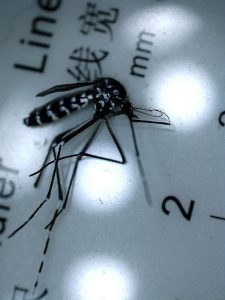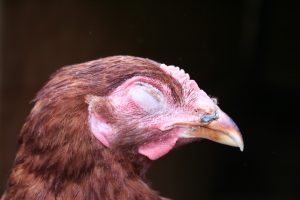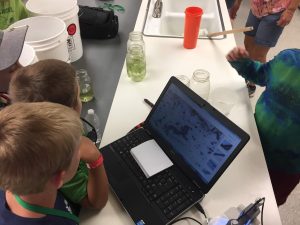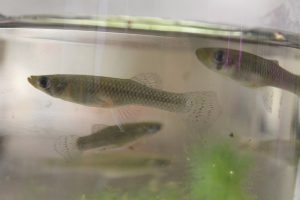The cool weather we are enjoying will be gone before you know it. Accompanying the warm weather comes the buzzing and biting of mosquitoes. Florida’s warm, humid climate provides a breeding haven for mosquitoes, making them a constant nuisance and potential health threat. It is important to note that these flying ectoparasites are responsible for over 830,000 deaths worldwide due to the ability for some species to serve as carriers (vectors) of diseases that affect people and animals.

Like in other parts of the world, Florida is home to some common species of mosquitoes that can carry diseases and affect humans, livestock, poultry, and wildlife. Mosquitoes also enjoy the pleasant weather conditions and environment, not for the beaches and the theme parks, but because their reproduction depends on one abundant element found all around us: water. As Floridians, there are many things we can do individually to reduce the numbers around our homes and farms by reducing their breeding grounds, as we dedicate time to inspect our property.
In this article we will discuss several key elements we should all understand:
- Why we should reduce mosquito breeding grounds.
- What species commonly cause diseases?
- Ways to reduce their population to reduce mosquito-borne diseases.
Buzzkill: Mosquitoes can make you sick
There are many potential risks associated with mosquito-borne diseases. These flying pests can carry several viruses but can also affect pets and livestock by spreading heartworm disease in dogs. In great numbers they can cause a reduction in weight gain in livestock and skin infections. In poultry, mosquitoes cause diseases that can affect the central nervous system, reduce egg production, and even cause death.

Some of the diseases transmitted by mosquitoes include:
- Dengue fever: This flu-like illness can cause severe complications.
- Zika virus: Particularly harmful to pregnant women, it can cause birth defects.
- West Nile virus: This can lead to severe neurological issues.
- Eastern equine encephalitis (EEE): This potentially fatal disease affects the brain.
These flying terrors come in different shapes, sizes
Not all mosquito species are bad. In fact, not all of them bite. Mosquitoes are a forage species for many animals in the wild, such as birds, bats, and fish. Knowing the enemy and what environments they prefer is important! Here are some common mosquito culprits in Florida:
- Asian tiger mosquito (Aedes albopictus): Aggressive daytime biter, thrives in urban areas. These species use containers such as tires, flowerpots, and vases as breeding areas for their young. Carrier of West Nile virus, and LaCrosse encephalitis (brain inflammation).
- Saltmarsh mosquito (Aedes sollicitans): Breeds in coastal areas. It uses ditches, grass pools, and marshes to rear its young. Adults are active at dusk and dawn. Carrier of West Nile virus, EEE, and yellow fever.
- Yellow fever mosquito (Aedes aegypti): Prefers laying eggs in artificial containers, bromeliads, buckets, and flowerpots. It is most frequently found in wooded areas. Carrier of yellow fever, dengue and Zika virus.
- Southern house mosquito (Cullex quinquefasciatus): Found throughout the state. This species is the carrier of dog heartworm, St. Louis encephalitis, and West Nile virus. It breeds in waterbodies with high organic content (ditches, dirty containers, dairy lagoons, etc.)
- Gallinipper (Psorophora ciliata): This species prefers wooded areas. The larvae are reared in ditches, furrows, citrus groves, and pasture areas. Although not known to carry any diseases, the bite of this species is usually more painful than others.

A proactive approach to mosquitoes in your home, farm and community

There are many practices we can employ to reduce mosquitoes around our homes. The most effective ones will be preventive actions. These include:
- Inspecting our farms and yards for areas where mosquitoes can breed.
- Drain and dispose of unused containers that can harbor water and serve as breeding grounds. These include bottles, bottle caps, cans, buckets, tires, planters, water troughs that are not in use, plastic tarps, and row-covers, etc.
- Use mosquito dunks or flakes on a regular basis. These products contain a biopesticide (biological agent that only affects mosquitoes) such as BTI (Bacillus thuringiensis israelensis): This naturally occurring bacterium targets mosquito larvae, safe for humans and pets. Place these on waterbodies and containers such as ponds, bird baths and waterers.
- Mosquito traps: Attract and eliminate adult mosquitoes using light, CO2, or attractants.
- Use predatory fish in ponds and water troughs: Introduce mosquito-eating fish like Gambusia or guppies. These will breed and provide long-lasting protection.
- Encourage natural predators. Attract bats, dragonflies, and other mosquito predators by providing habitat and reducing the use of unnecessary pesticides.
In agriculture operations we can also reduce the population of these painful pests.

Credit: S. McCann (UF/IFAS/FMEL)
- Manage larger ponds with BTI granules or larvicidal mats.
- Eliminate breeding sites around livestock areas.
- Clear overgrown vegetation around the property.
- Introduce mosquito-eating fish into ponds and ditches.
Personal protection and appropriate deterrents
- Wear long sleeves and pants when outdoors, especially at dusk and dawn.
- Use mosquito repellent containing DEET, picaridin, or oil of lemon eucalyptus.
- Install and maintain window and door screens.
Conclusion
While Florida’s warm climate is undeniably pleasant, it also creates a breeding ground for pesky and potentially dangerous mosquitoes. These flying foes can transmit diseases to humans, animals, and poultry, causing significant health and economic impacts.
Remember that mosquitoes need water to be able to reproduce. Eliminate standing water in containers, manage larger ponds, and clear overgrown areas. Attract bats, dragonflies, and use mosquito-eating fish in ponds and water features. Finally, wear protective clothing, and use repellents when you are outside.
If you need more information on reducing mosquito populations in your property, please give us a call at 863-773-2164, or come by the UF/IFAS Extension Hardee County office. We are located at 507 Civic Center Drive, Wauchula FL 33873.
Keep learning!
- Mosquitoes and their Control
- Yellow Fever Mosquito (Aedes aegypti) – EDIS Publication EEN-434
- Factsheet: West Nile Virus – EDIS Publication ENY-2083
- Zika – UF/IFAS Medical Entomology Laboratory
- Mosquitoes and their Control – EDIS Publication ENY- 753
- Mosquito Borne Dog Heartworm Disease – EDIS Publication ENY-628
- Surveillance for Mosquito-Borne Viruses – EDIS Publication ENY699
- Eastern Equine Encephalitis – Florida Department of Agriculture and Consumer Services
 2
2
